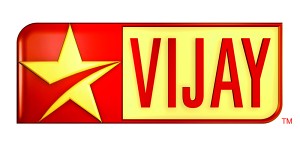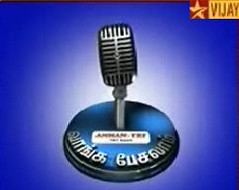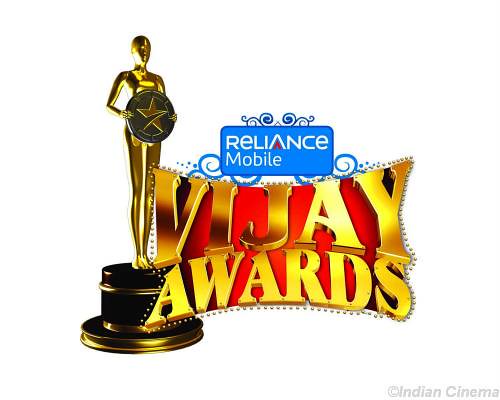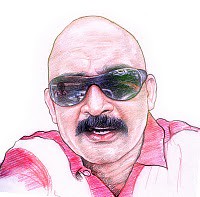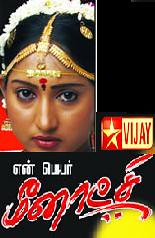Backward integration is the new business for the NDTV Group, which runs a general entertainment channel NDTV Imagine. The company has launched an independent production house, called RedDot Productions, which will create and design content for television and interactive media. With over 5000 hours of active programming under its belt, RedDot Productions will offer a whole array of services like documentaries, corporate films, advertiser-driven audio-visuals, media consultancy. It will experiment with various genres of television programming, with content related to travel, lifestyle, reality and youth oriented shows.
Dr. Prannoy Roy, chairman, NDTV Group, said, "RedDot is a team of NDTV's most creative and talented people. It will be producing shows not only for all our channels, but also for other non-NDTV channels. With this launch, RedDot aims at leading the country with path breaking shows and create new standards that will bring world class production qualities to India." The new entity will be spearheaded by Richa Sahai, who has been appointed as the creative head. Along with her core team, Sahai has, in the past, worked not only with NDTV, but for other organizations as well, such as Discovery Travel and Living, BBC, ESPN, Star Plus, Sony, Pogo, Zoom and Doordarshan.
Richa Sahai, creative head, RedDot Productions, added, "The new unit will broaden the scope of what NDTV is known for within India and overseas. It will be a return to roots and core values of being a lean, efficient set-up run by a team of creative individuals producing high quality programming." Different team members of the production house have been part of shows such as Good Morning India, Galli Galli Sim Sim, Gustakhi Maaf, Ji Mantriji and Indian Idol. RedDot Productions is already in talks with several corporates, educational institutes and government agencies. The services of the production house will be competitively priced, to ensure that it does not miss out on meaningful projects merely on account of high prices..
A Televisionpoint.com News
Saturday, April 25, 2009
Poll 2009: Times Now = NDTV 24X7 + CNN-IBN
Going by past two years, Times Now makes an unlikely leader. For a channel that was dismissed by many, it has beaten rivals and stayed at the top successively for five of the past six months, reaching an average 36 per cent channel share in February and March, according to TAM Media data. In April, the TRPs for the first phase of voting in General Elections says that Times Now has walked away with a dramatic lead that is much higher than its nearest competitors put together. The channel has provided the largest non-stop broadcast of voting related news on April 16, the polling day.
On the first day of voting, Times Now scored 45 per cent channel share, compared to just 16 per cent of NDTV 24X7 and 21 per cent of CNN-IBN (C&S M 25+ AB, 1 Mn+ markets). In the C&S M 15+ AB, 1 Mn+ markets, Times Now has garnered a whopping 40 per cent channel share as compared to 19 per cent of NDTV and CNN-IBN each. Sandeep Sharma, senior vice-president, sales and marketing, Times Now, says, "The special election programming and the best panel by far to be seated on any news channel led by Arnab Goswami himself has the viewers getting a relevant and unmatched perspective on important aspects linked to the political scenario as it unfolds in the country."
For the General Elections 2009, Times Now has drawn the widest panel of political experts, with stalwarts like Mahesh Ranagrajan, Dileep Padgaonkar, Vinod Mehta, Swapan Dasgupta, Swaminathan Aiyer, Nalini Singh, Navika Kumar and Paranjoy Guha Thakurta joining Arnab Goswami in the last leg of the campaign. It maybe noted that the English news channel revenue share is about 15 per cent even though the viewership is less than 9 per cent. Within the news genre, eight English channels get a much bigger slice, about Rs 650-700 crore. This is almost the same as about 15 Hindi and 25 regional news channels put together. According to Divya Radhakrishnan, president, The Media Edge, "At about Rs 1,200-1,300 crore, news channels get a disproportionate share of the TV advertising pie of Rs 8,300 crore. Ad revenue from the English news genre is split equally between five general English channels and three business channels. It is good that Times Now has managed to command an whooping 45 per cent share in its segment."
Courtesy - Television point
On the first day of voting, Times Now scored 45 per cent channel share, compared to just 16 per cent of NDTV 24X7 and 21 per cent of CNN-IBN (C&S M 25+ AB, 1 Mn+ markets). In the C&S M 15+ AB, 1 Mn+ markets, Times Now has garnered a whopping 40 per cent channel share as compared to 19 per cent of NDTV and CNN-IBN each. Sandeep Sharma, senior vice-president, sales and marketing, Times Now, says, "The special election programming and the best panel by far to be seated on any news channel led by Arnab Goswami himself has the viewers getting a relevant and unmatched perspective on important aspects linked to the political scenario as it unfolds in the country."
For the General Elections 2009, Times Now has drawn the widest panel of political experts, with stalwarts like Mahesh Ranagrajan, Dileep Padgaonkar, Vinod Mehta, Swapan Dasgupta, Swaminathan Aiyer, Nalini Singh, Navika Kumar and Paranjoy Guha Thakurta joining Arnab Goswami in the last leg of the campaign. It maybe noted that the English news channel revenue share is about 15 per cent even though the viewership is less than 9 per cent. Within the news genre, eight English channels get a much bigger slice, about Rs 650-700 crore. This is almost the same as about 15 Hindi and 25 regional news channels put together. According to Divya Radhakrishnan, president, The Media Edge, "At about Rs 1,200-1,300 crore, news channels get a disproportionate share of the TV advertising pie of Rs 8,300 crore. Ad revenue from the English news genre is split equally between five general English channels and three business channels. It is good that Times Now has managed to command an whooping 45 per cent share in its segment."
Courtesy - Television point
ESPN Star Sports renews TV rights for Wimbledon for 6 years
ESPN Star Sports has renewed its broadcast rights for Wimbledon Championships for six years from 2009-2014. According to the deal, ESPN will get exclusive broadcast rights including cable and satellite and terrestrial and new multimedia rights across platforms in 24 markets across Asia. The new contract will witness the sports broadcaster providing multi-platform access including online at www.espnstar.com, mobile at mobileESPN and radio coverage of Wimbledon.
ESPN Star Sports, which has been broadcasting Wimbledon in Asia for the last 17 years, will get over 70 hours of coverage annually, including day-long live action, daily highlights, shows and live broadcast of the Men’s and Ladies’ Singles quarter-finals, semi-finals and final. ESPN Star Sports managing director Manu Sawhney says, “With its rich tradition and history, the Wimbledon Championship holds a special place in the hearts of both players and fans alike. We are very pleased to extend our partnership with the All-England Lawn Tennis and Croquet Club. We share a very strong relationship with them and remain committed to continue strengthening this tournament amongst our fans and business partners in Asia.” All-England Lawn Tennis Club’s John Rowlinson adds, “Over the last 17 years, ESPN Star Sports has played an integral role in building this tournament with its comprehensive broadcast coverage and top quality presentation. With its extensive reach across Asia, we are confident that millions of tennis fans will continue to enjoy unparalleled coverage of the Wimbledon Championship for the next six years.”
ESPN Star Sports, which has been broadcasting Wimbledon in Asia for the last 17 years, will get over 70 hours of coverage annually, including day-long live action, daily highlights, shows and live broadcast of the Men’s and Ladies’ Singles quarter-finals, semi-finals and final. ESPN Star Sports managing director Manu Sawhney says, “With its rich tradition and history, the Wimbledon Championship holds a special place in the hearts of both players and fans alike. We are very pleased to extend our partnership with the All-England Lawn Tennis and Croquet Club. We share a very strong relationship with them and remain committed to continue strengthening this tournament amongst our fans and business partners in Asia.” All-England Lawn Tennis Club’s John Rowlinson adds, “Over the last 17 years, ESPN Star Sports has played an integral role in building this tournament with its comprehensive broadcast coverage and top quality presentation. With its extensive reach across Asia, we are confident that millions of tennis fans will continue to enjoy unparalleled coverage of the Wimbledon Championship for the next six years.”
Friday, April 24, 2009
CSK ???
With Chennai Super Kings Cheerleaders & Juniors programs still goin on our Vijay Tv...I donno whether the winners of this contest had been really used in the IPL season 2... the tournament had already started n the cheerleaders who appear in the matches doesnt look like Indians first of all.. and donno wat had happened to these cheerleaders who had won this competition. I was thinking that these ppl would b there in the matches but :( is it bcos the tournament is been held at South Africa.. nothing can b done ??? if this is the fate for cheerleaders what will be for Juniors ;)
Sun TV and Zee Entertainment lead in Asia-Pacific
Kalanithi Maran's Sun TV Network and Subhash Chandra's Zee Entertainment Enterprises, the two homegrown media companies, have managed to de-throne Rupert Murdoch's Star Group as the leading Asia-Pacific pay broadcaster, according to the latest ratings on the south asia market released by Media Partners Asia (MPA), an international media research agency. According to the MPA report, both Sun TV Network and Zee Entertainment are ranked first and second respectively in the pecking order of leading pay broadcasters in the region, while Star Group has moved down to the sixth position, from fourth place, which it held in 2008. The rankings are based on EBITDA (earnings before interest, taxes, depreciation and amortization).
According to the rankings, Sun TV Network's first position was based on an EBITDA of $ 133 million (Rs 638 crore) for the financial year 2008-09, while Zee Entertainment was ranked second with an EBITDA of $ 121 million (Rs 580 crore). According to MPA, Star Group's margins have been under pressure for some time due to an erosion of its earnings in India, its largest market in Asia, due to the higher content costs and competition from rivals such as Colors and Zee TV. Star has also been suffering losses in the China market and this has contributed to a slowdown in its growth.
The Star Group has EBITDA numbers of about $ 70 million (Rs 336 crore) on an unconsolidated basis, which includes earnings of its equity-accounted associates such as ESPN Star Sports, Phoenix Satellite TV, MCCS, ANTV, Hathway and Tata Sky. The MPA has projected a tough 2009-10 fiscal for television advertisers, broadcasters and direct-to-home (DTH) operators in India due to slowing advertising growth and lower revenue realisation. The latest MPA analysis on India says TV advertising will grow by only 6.5 per cent in 2009, compared with 15.6 per cent in 2008.
According to the rankings, Sun TV Network's first position was based on an EBITDA of $ 133 million (Rs 638 crore) for the financial year 2008-09, while Zee Entertainment was ranked second with an EBITDA of $ 121 million (Rs 580 crore). According to MPA, Star Group's margins have been under pressure for some time due to an erosion of its earnings in India, its largest market in Asia, due to the higher content costs and competition from rivals such as Colors and Zee TV. Star has also been suffering losses in the China market and this has contributed to a slowdown in its growth.
The Star Group has EBITDA numbers of about $ 70 million (Rs 336 crore) on an unconsolidated basis, which includes earnings of its equity-accounted associates such as ESPN Star Sports, Phoenix Satellite TV, MCCS, ANTV, Hathway and Tata Sky. The MPA has projected a tough 2009-10 fiscal for television advertisers, broadcasters and direct-to-home (DTH) operators in India due to slowing advertising growth and lower revenue realisation. The latest MPA analysis on India says TV advertising will grow by only 6.5 per cent in 2009, compared with 15.6 per cent in 2008.
IPL 2 Ratings Dip; Big Trouble ??
For the IPL season two, washed out schedules, low-scoring matches and lukewarm viewer response are making advertisers increasingly worried and they say that if games played in the first eight days continue to elicit low television ratings, it will impact the momentum of future matches in the League. According to TAM Media Research, the match played on April 19 (Sunday) between Kings XI Punjab and Delhi Daredevils garnered a TVR of 5.08 (C&S 4+, six metros). The second match between Kolkata Knight Riders and Deccan Chargers Hyderabad ended up with a TVR of 5.34 (C&S 4+, six metros).
The first match played on Sunday (Kings XI Punjab vs Delhi Daredevils) was watched by 9.16 million viewers and the second match on the same day (Kolkata Knight Riders vs Deccan Chargers Hyderabad) commanded a viewership of 10.99 million (C&S 4+, six metros). Both the matches on Sunday recorded higher TVRs in CAS and DTH households. The first and second matches of the day saw TVRs of 6.25 and 6.46 respectively (Digital 4+, six metros). Though the TVRs for the matches were higher, the reach for both the matches were comparatively lower than C&S households. The first match was watched by 1.15 million viewers, whereas the second match was watched by 1.24 million viewers.
The match played on April 20 (Monday) between Chennai Super Kings and Royal Challengers Bangalore received a TVR of 6.02 (C&S 4+, six metros). The match was watched by 13.44 million viewers. With a TVR of 7.86 (Digital 4+, six metros), the game reached out to 1.49 million viewers. Another league match played on April 21 (Tuesday) between Kings XI Punjab and Kolkata Knight Riders failed to make an impact as the match recorded a low TVR of 3.64 (C&S 4+, six metros) and was watched by 7.94 million people. Reaching out to 1.17 million people, the Tuesday's match managed a TVR of 4.34 (Digital 4+, six metros). The second match for the same day, scheduled between Mumbai Indians and Rajasthan Royals, was abandoned due to rains.
The poor ratings puts a question mark on the plans of SET Max, the official broadcaster, which has saved about 15 per cent of its advertising inventory to sell at a 30-40 per cent premium later in the tournament. The broadcaster will have to sell the remaining spots at lower rates if TRPs don't pick up, and in any case, for matches that are being rained out, SET Max will have to compensate advertisers by airing their ads in subsequent matches. Advertisers have already pumped in an estimated Rs 350 crore on broadcaster, at rates double that of season 1, that too in a economic slowdown. The channel has sold spots to advertisers for Rs 3.75- 4 lakh per 10 seconds, almost Rs 1.5-Rs 2 lakh higher than last year's rates
Courtesy - Televisionpoint.com
The first match played on Sunday (Kings XI Punjab vs Delhi Daredevils) was watched by 9.16 million viewers and the second match on the same day (Kolkata Knight Riders vs Deccan Chargers Hyderabad) commanded a viewership of 10.99 million (C&S 4+, six metros). Both the matches on Sunday recorded higher TVRs in CAS and DTH households. The first and second matches of the day saw TVRs of 6.25 and 6.46 respectively (Digital 4+, six metros). Though the TVRs for the matches were higher, the reach for both the matches were comparatively lower than C&S households. The first match was watched by 1.15 million viewers, whereas the second match was watched by 1.24 million viewers.
The match played on April 20 (Monday) between Chennai Super Kings and Royal Challengers Bangalore received a TVR of 6.02 (C&S 4+, six metros). The match was watched by 13.44 million viewers. With a TVR of 7.86 (Digital 4+, six metros), the game reached out to 1.49 million viewers. Another league match played on April 21 (Tuesday) between Kings XI Punjab and Kolkata Knight Riders failed to make an impact as the match recorded a low TVR of 3.64 (C&S 4+, six metros) and was watched by 7.94 million people. Reaching out to 1.17 million people, the Tuesday's match managed a TVR of 4.34 (Digital 4+, six metros). The second match for the same day, scheduled between Mumbai Indians and Rajasthan Royals, was abandoned due to rains.
The poor ratings puts a question mark on the plans of SET Max, the official broadcaster, which has saved about 15 per cent of its advertising inventory to sell at a 30-40 per cent premium later in the tournament. The broadcaster will have to sell the remaining spots at lower rates if TRPs don't pick up, and in any case, for matches that are being rained out, SET Max will have to compensate advertisers by airing their ads in subsequent matches. Advertisers have already pumped in an estimated Rs 350 crore on broadcaster, at rates double that of season 1, that too in a economic slowdown. The channel has sold spots to advertisers for Rs 3.75- 4 lakh per 10 seconds, almost Rs 1.5-Rs 2 lakh higher than last year's rates
Courtesy - Televisionpoint.com
Thursday, April 23, 2009
Blind Challenge :)
This week in Aachi's Boys Vs Girls show.. be sure to watch the challenge round being telecasted on friday itself..this week it is going to be interesting... the challenge is between Dev & Brinda Das and both of them will be dancing blind.. yeah.. their eyes would be closed n they would give a stunning performance. This will be a real challenge for both of them n lets see how they perofrm... I have been thinking why did Vijay tV had put this challenge round on friday itself ??? is it bcos the viewers are not interested on fridays shows since its just the time pass ;)
Does advertising drive reality or only reflects it ?
Whether advertising drives reality or reflects it remains a ball-breaker and one of life's enduring and unsolved mysteries. Industry professionals vociferously insist that the advertising fraternity, like Bollywood, continue to get away with blue murder and invariably falling back on the old line – "Why blame us ? We are only reflecting the times." The advertising professionals beg this lot to shake off their Rip Van Winkle robe, wake up and look around. In a globalised, youth-driven world, firmly in the embrace of new-age attitudes and aspirations, this brand of stone-age thinking, they believe, is both regressive and ridiculous.
Is ethics in advertising really an obsolete word in the age of Britney Spears and Rakhi Sawant or despite all the new-age blah-blah, do basic human values remain unchanged and a hit in that direction spells doom or are both sides just over-reacting to this issue and in the process, missing out on the much-needed perspective, focus and main plot ? Uma Vasudev, a eminent media commentator and author, fires the first salvo. The veteran writer believes that in these irreverent and youth-driven times "it is a fashionable thing – by shallow, self-proclaimed intellectuals and liberated spirits hysterically anxious to get their posturing right by sounding young – to trash anything that is solid, wholesome, traditional or conventional."
While she heartily agrees that some people tend to get too touchy and hyper to some ads like (Sprite, MotoYuva, Axe, Virgin Mobile, Colgate), Uma suggests that some kind of moral policing must happen. "Remember, one man's humour can be another's tumour." Ex-Motorola and presently chief marketing officer, Tata Teleservices Lloyd Mathias whose earlier MotoYuva TVCs feature strongly in this debate – reacts in his usual, laid-back fashion.
"See, advertising is about dramatising, blowing-up and exaggerating slice-of-life moments to make them interesting, appealing and engaging to the readers/viewers, while triggering the purchase intent. This has to be done keeping the sensibilities of the target group in mind. A total connect with them is a given." Mathias says.
Mathias points to the ad where the father raves and rants at his son's shabby room and sloppy everything, while the kid, with earplugs, rhythmically nods to the song he hears on his audio."It's a hugely today's situation and totally identifiable by most parents of teenagers and also the kids themselves. The ad emerged from human insight and was a light-hearted social commentary on the parent-child scenario of the day. It is not and was never meant to promote parental defiance or disrespect. It's a tongue-in-cheek take on everyday, real-life face-offs between baap-beta!" Same is the case with all the cheeky MotoYuva ads blitzing the ad space, Mathias insists. KV Sridhar (Pops), national creative director, Leo Burnett agrees. He believes it's a "generational thing" and strongly requests the kill-joy brigade not to drag morality, values and integrity into it.
As Mathias pointed out, advertising hypes life to make it look sexy for the viewer – but it's almost always rooted in fact and truth. Be it Ogilvy's Mentos ad, or Perfetti [Papa at a party. Papa in the office. Papa at home] ad, Bates' Virgin Mobile ad, Ogilvy's MotoYuva ads – it's a throw-back on the times we live in.
"Relationships, codes of conduct and ways of expression have undergone a sea-change. It's a cooler, more informal and chilling time. The old authoritarian dad-kids relationship, in urban India is a thing of the past. They are more buddies and engaged in closer, warmer bonding. Kids are cheekier and adults are cooler. That's the truth and that's what these ads show, say and express," avers Pops.
Couched in entertainment, it hits the target spot-on and instantly, at a subliminal level, creates mischief through propagating wrong values. At the end of the day, one thing needs to be recognised and realised in a cool and objective manner. Barring some overtly vulgar ads, most of the stuff discussed is not really offensive, either in terms of morals or values. Remember, the rigid good and bad, moral and immoral, done and not done zones don't exist anymore. It's an age of confluence, not conflict. To be cheeky or naughty is not perceived as a cardinal sin, which calls for capital punishment. Humour, audacious or irreverent, is cool, as for influencing and corrupting kids, 10 is the new 15.
Courtesy - Televisionpoint.com
Is ethics in advertising really an obsolete word in the age of Britney Spears and Rakhi Sawant or despite all the new-age blah-blah, do basic human values remain unchanged and a hit in that direction spells doom or are both sides just over-reacting to this issue and in the process, missing out on the much-needed perspective, focus and main plot ? Uma Vasudev, a eminent media commentator and author, fires the first salvo. The veteran writer believes that in these irreverent and youth-driven times "it is a fashionable thing – by shallow, self-proclaimed intellectuals and liberated spirits hysterically anxious to get their posturing right by sounding young – to trash anything that is solid, wholesome, traditional or conventional."
While she heartily agrees that some people tend to get too touchy and hyper to some ads like (Sprite, MotoYuva, Axe, Virgin Mobile, Colgate), Uma suggests that some kind of moral policing must happen. "Remember, one man's humour can be another's tumour." Ex-Motorola and presently chief marketing officer, Tata Teleservices Lloyd Mathias whose earlier MotoYuva TVCs feature strongly in this debate – reacts in his usual, laid-back fashion.
"See, advertising is about dramatising, blowing-up and exaggerating slice-of-life moments to make them interesting, appealing and engaging to the readers/viewers, while triggering the purchase intent. This has to be done keeping the sensibilities of the target group in mind. A total connect with them is a given." Mathias says.
Mathias points to the ad where the father raves and rants at his son's shabby room and sloppy everything, while the kid, with earplugs, rhythmically nods to the song he hears on his audio."It's a hugely today's situation and totally identifiable by most parents of teenagers and also the kids themselves. The ad emerged from human insight and was a light-hearted social commentary on the parent-child scenario of the day. It is not and was never meant to promote parental defiance or disrespect. It's a tongue-in-cheek take on everyday, real-life face-offs between baap-beta!" Same is the case with all the cheeky MotoYuva ads blitzing the ad space, Mathias insists. KV Sridhar (Pops), national creative director, Leo Burnett agrees. He believes it's a "generational thing" and strongly requests the kill-joy brigade not to drag morality, values and integrity into it.
As Mathias pointed out, advertising hypes life to make it look sexy for the viewer – but it's almost always rooted in fact and truth. Be it Ogilvy's Mentos ad, or Perfetti [Papa at a party. Papa in the office. Papa at home] ad, Bates' Virgin Mobile ad, Ogilvy's MotoYuva ads – it's a throw-back on the times we live in.
"Relationships, codes of conduct and ways of expression have undergone a sea-change. It's a cooler, more informal and chilling time. The old authoritarian dad-kids relationship, in urban India is a thing of the past. They are more buddies and engaged in closer, warmer bonding. Kids are cheekier and adults are cooler. That's the truth and that's what these ads show, say and express," avers Pops.
Couched in entertainment, it hits the target spot-on and instantly, at a subliminal level, creates mischief through propagating wrong values. At the end of the day, one thing needs to be recognised and realised in a cool and objective manner. Barring some overtly vulgar ads, most of the stuff discussed is not really offensive, either in terms of morals or values. Remember, the rigid good and bad, moral and immoral, done and not done zones don't exist anymore. It's an age of confluence, not conflict. To be cheeky or naughty is not perceived as a cardinal sin, which calls for capital punishment. Humour, audacious or irreverent, is cool, as for influencing and corrupting kids, 10 is the new 15.
Courtesy - Televisionpoint.com
Wednesday, April 22, 2009
Wild Card Vote...
If you wanna vote for your favourite Wild card contestant in Airtel Super Singer 2008 program.. here is the list for you..
Ranjani - SS14
RaghiniShree - SS10
Prasanna - SS22
Santhosh - SS05
Vijay Narayan - SS18
To Vote -
Send the code as SMS to 57827
or
Visit www.vijay.indya.com
Ranjani - SS14
RaghiniShree - SS10
Prasanna - SS22
Santhosh - SS05
Vijay Narayan - SS18
To Vote -
Send the code as SMS to 57827
or
Visit www.vijay.indya.com
Indian TV sector to see moderate growth in 2009
The revenue growth for cable and satellite broadcasters in India will moderate from 20 per cent in 2008 to 16 per cent in 2009, with total sales reaching over $2.7 billion. Advertising will account for 67 per cent of the revenue mix while subscription will make up for the remaining 33 per cent, Media Partners Asia (MPA) says in its latest report. The report, which is part of 'Asia Pacific Pay-TV and Broadband Markets 2009' series, also projects that ad sales growth will moderate to 7 per cent in 2009. And, with the notable exception of Sun TV, most major broadcasters are likely to see their earnings dip during 2009. An alarming element in the TV channel cost base remains placement (carriage) fees, paid out to multi-system operators (MSOs) and DTH platforms to gain placement on the TV dial. According to MPA estimates, TV channels in 2008 extracted $700 million in subscription from cable and DTH satellite distribution, but spent half of this amount on placement fees.
Pay-TV subscription revenues are expected to grow at a CAGR of 12 per cent over the next decade to reach $13 billion by 2018. Out of this $7.1 billion will come from analog subscription fees, $5.7 billion from digital TV subscription, and $500 million from HDTV, personal video recorder (PVR), video-on-demand (VOD) and pay-per-view (PPV) services. MPA also predicts that after a significant softening over 2009-10, pay-TV advertising will revert to double-digit growth from 2011 onwards, and touch $4.7 billion by 2018. Says MPA executive director Vivek Couto, "India's economy and its consumer class can look forward to a prosperous future in the long term. This is encouraging for consumer proxies such as media in particular. But growth without value and profit is of little consequence. As a result, four key inter-related areas need refocusing with a positive resolution: business models; the investment case; regulation; and market structure."
"There are clear leaders in both content and distribution but both areas have limited earnings visibility in the near-term. The biggest concern is the availability of cash and new funds for emerging players in content and distribution, with the key links in the pay-TV industry value chain eager to conserve capital and cash in the near term," Couto adds. The report predicts that Indian media's macro story will remain robust in the long-term with a beneficial impact for pay-TV content and distribution. However, it warns that many industry business models are currently burdened by excessive cost, insufficient pricing power and overregulation. And, at the same time the funding required to grab market share and build profitable franchises has been somewhat depleted. All of this, combined with the current ad downturn, will lead to more realistic business models as well as rational cost structures.
Pay-TV Penetration
Pay-TV penetration exceeding more than 90 per cent by 2018, equivalent to 152 million subs: with cable having 68 per cent market share, DTH 30per cent and IPTV 2 per cent. Digital pay-TV penetration will grow from 10 per cent in 2008 to 33 per cent by 2013, and 42 per cent by 2018. Broadband penetration of the population will rise from 0.5 per cent in 2008 to 1.6 per cent by 2018, with ADSL and fiber commanding 43 per cent market share; wireless 27 per cent and cable modem 20 per cent.
Significant price competition and various regulatory complexities continue to limit Arpu (Average revenue per user) growth, with average monthly fees nationwide at less than $4 or Rs 170 in 2008 ($4.0 for cable, $3.4 on DTH). Capital constraints will slow momentum in last mile consolidation and DTV deployment across the cable industry over 2009-10 but DTH satellite growth will remain robust over 2009-10, powered by the growth of Sun Direct, Dish TV, Tata Sky and Reliance Big TV in particular. Near-term profitability in distribution will be hampered by rising costs though a more rationalized content cost structure will help Dish TV reach breakeven earlier than expected whist in cable, Hathway will continue to remain profitable.
Revenue
Significant deceleration in industry revenue growth during 2009, largely because of lower ad demand as a result of the economic downturn. After 20per cent plus growth in 2006 and 2007, ad growth decelerated to 14.3 per cent in 2008 and will drop to 5.4 per cent in 2009, before a partial recovery to 9 per cent growth in 2010.
TV advertising grew 15.6 per cent in 2008 but will grow only by 6.5 per cent in 2008 before rebounding to an 8.7 per cent increase in 2010. Pay-TV ad sales will grow by 7 per cent and 9 per cent respectively in 2009 and 2010.
Industry subscription growth should remain robust because of large volumes and continued DTH growth. Overall, total industry sales growth will decelerate from 19.3 per cent in 2008 to 13.4 per cent in 2009.
Long-term outlook
Cable MSOs can continue to acquire and consolidate primary points, as well as build realistic long-term business models around secure DTV deployment, broadband and carriage fees. The DTH industry is likely to see more rational price competition after 2010 as well as better churn rates and monetization with the growth of VAS and ad revenues. In 2008, less than 15 per cent of pay-TV homes had at least one digital STB. This proportion will grow to 34 per cent by 2013, and 46 per cent by 2018.
Digital cable deployment will reach 13.4 million subs by 2013 and 21.1 million by 2018. DTH will grow to 38 million subs by 2013 and 46 million subs by 2018. Monthly pay-TV Arpu will grow from less than $4 in 2008 to $5 by 2013, and $7 by 2018. Going forward, the big opportunities will continue to converge around India's regional and international markets, which will boost earnings for Sun, Star, and Zee in particular as well as new emerging players such as Colors.
A Indiantelevision.com News
Pay-TV subscription revenues are expected to grow at a CAGR of 12 per cent over the next decade to reach $13 billion by 2018. Out of this $7.1 billion will come from analog subscription fees, $5.7 billion from digital TV subscription, and $500 million from HDTV, personal video recorder (PVR), video-on-demand (VOD) and pay-per-view (PPV) services. MPA also predicts that after a significant softening over 2009-10, pay-TV advertising will revert to double-digit growth from 2011 onwards, and touch $4.7 billion by 2018. Says MPA executive director Vivek Couto, "India's economy and its consumer class can look forward to a prosperous future in the long term. This is encouraging for consumer proxies such as media in particular. But growth without value and profit is of little consequence. As a result, four key inter-related areas need refocusing with a positive resolution: business models; the investment case; regulation; and market structure."
"There are clear leaders in both content and distribution but both areas have limited earnings visibility in the near-term. The biggest concern is the availability of cash and new funds for emerging players in content and distribution, with the key links in the pay-TV industry value chain eager to conserve capital and cash in the near term," Couto adds. The report predicts that Indian media's macro story will remain robust in the long-term with a beneficial impact for pay-TV content and distribution. However, it warns that many industry business models are currently burdened by excessive cost, insufficient pricing power and overregulation. And, at the same time the funding required to grab market share and build profitable franchises has been somewhat depleted. All of this, combined with the current ad downturn, will lead to more realistic business models as well as rational cost structures.
Pay-TV Penetration
Pay-TV penetration exceeding more than 90 per cent by 2018, equivalent to 152 million subs: with cable having 68 per cent market share, DTH 30per cent and IPTV 2 per cent. Digital pay-TV penetration will grow from 10 per cent in 2008 to 33 per cent by 2013, and 42 per cent by 2018. Broadband penetration of the population will rise from 0.5 per cent in 2008 to 1.6 per cent by 2018, with ADSL and fiber commanding 43 per cent market share; wireless 27 per cent and cable modem 20 per cent.
Significant price competition and various regulatory complexities continue to limit Arpu (Average revenue per user) growth, with average monthly fees nationwide at less than $4 or Rs 170 in 2008 ($4.0 for cable, $3.4 on DTH). Capital constraints will slow momentum in last mile consolidation and DTV deployment across the cable industry over 2009-10 but DTH satellite growth will remain robust over 2009-10, powered by the growth of Sun Direct, Dish TV, Tata Sky and Reliance Big TV in particular. Near-term profitability in distribution will be hampered by rising costs though a more rationalized content cost structure will help Dish TV reach breakeven earlier than expected whist in cable, Hathway will continue to remain profitable.
Revenue
Significant deceleration in industry revenue growth during 2009, largely because of lower ad demand as a result of the economic downturn. After 20per cent plus growth in 2006 and 2007, ad growth decelerated to 14.3 per cent in 2008 and will drop to 5.4 per cent in 2009, before a partial recovery to 9 per cent growth in 2010.
TV advertising grew 15.6 per cent in 2008 but will grow only by 6.5 per cent in 2008 before rebounding to an 8.7 per cent increase in 2010. Pay-TV ad sales will grow by 7 per cent and 9 per cent respectively in 2009 and 2010.
Industry subscription growth should remain robust because of large volumes and continued DTH growth. Overall, total industry sales growth will decelerate from 19.3 per cent in 2008 to 13.4 per cent in 2009.
Long-term outlook
Cable MSOs can continue to acquire and consolidate primary points, as well as build realistic long-term business models around secure DTV deployment, broadband and carriage fees. The DTH industry is likely to see more rational price competition after 2010 as well as better churn rates and monetization with the growth of VAS and ad revenues. In 2008, less than 15 per cent of pay-TV homes had at least one digital STB. This proportion will grow to 34 per cent by 2013, and 46 per cent by 2018.
Digital cable deployment will reach 13.4 million subs by 2013 and 21.1 million by 2018. DTH will grow to 38 million subs by 2013 and 46 million subs by 2018. Monthly pay-TV Arpu will grow from less than $4 in 2008 to $5 by 2013, and $7 by 2018. Going forward, the big opportunities will continue to converge around India's regional and international markets, which will boost earnings for Sun, Star, and Zee in particular as well as new emerging players such as Colors.
A Indiantelevision.com News
Hello Kuttichathan !!!
Vijay TV is all set to start yet another show for children and I am sure this will attract many kids to watch it for sure.. Coming monday, there is a new show "Hello Kuttichathan" to be telecasted at 6.30 PM from 27th April, 2009. This seems to be a magical show haring a kuttichathan n some of its magical moments..
27th April, 2009 - Monday to Thursday - 6.30 PM
27th April, 2009 - Monday to Thursday - 6.30 PM
Indian pay-TV industry facing shake-out
Indian pay-television industry is facing a shake-out amid intense competition during the economic crisis. Multinationals are expected to suffer a squeeze on profits from the region this year, while others could suffer losses on investment in new channels that are struggling in tougher conditions. Media Partners Asia (MPA), a Hong Kong based Media Research firm, has come out with a study, which says India has been a standout market in Asia for pay-TV channels and distributors because of its large audiences and relatively liberal foreign ownership and content laws – particularly compared with China.
"After a significant softening in 2009/10, pay-TV advertising will see double-digit growth from 2011. And, all of foreign players have to rationalise their costs because advertising sales and subscriptions are falling," said Vivek Couto, executive director of MPA. Foreign-owned or affiliated companies in India's pay-TV industry last year generated about $ 1.2 billion in sales compared with about $ 500 million in China. The country's pay-TV market is one of the world's largest, with more than 94 million customers generating $ 5.89 billion in revenue a year, about 29 per cent from adverting and the remainder from subscriptions.
Large foreign investors have rushed to capture part of the pie, including News Corp, Viacom, Time Warner, Walt Disney and Singapore government investment company Temasek. However, the industry has become overcrowded. MPA estimates there are 350 channels in India competing for space on distribution systems capable of carrying only about 150 each. This has sharply increased the cost of carriage, the price of being carried on a cable system.
MPA estimates channels paid nearly half their revenues from subscriptions to distributors last year just to carry their content. Another problem is much of the industry is controlled by the unorganised sector, small cable TV operators, who misreport earnings from customers to broadcasters and pocket the difference. Subscribers to digital pay-TV, controlled by larger conglomerates, often with foreign investors, number only about 13.4 million.
MPA predicts a relatively mild slowdown in revenue growth, from 20 per cent last year to 16 per cent this year, with ad growth slowing to 7 per cent. News Corp's consolidated profit from ventures in the region, led by Star TV in India, is forecast in the report to fall from about $ 150 million to $ 80 million.
Courtesy - Televisionpoint.com
"After a significant softening in 2009/10, pay-TV advertising will see double-digit growth from 2011. And, all of foreign players have to rationalise their costs because advertising sales and subscriptions are falling," said Vivek Couto, executive director of MPA. Foreign-owned or affiliated companies in India's pay-TV industry last year generated about $ 1.2 billion in sales compared with about $ 500 million in China. The country's pay-TV market is one of the world's largest, with more than 94 million customers generating $ 5.89 billion in revenue a year, about 29 per cent from adverting and the remainder from subscriptions.
Large foreign investors have rushed to capture part of the pie, including News Corp, Viacom, Time Warner, Walt Disney and Singapore government investment company Temasek. However, the industry has become overcrowded. MPA estimates there are 350 channels in India competing for space on distribution systems capable of carrying only about 150 each. This has sharply increased the cost of carriage, the price of being carried on a cable system.
MPA estimates channels paid nearly half their revenues from subscriptions to distributors last year just to carry their content. Another problem is much of the industry is controlled by the unorganised sector, small cable TV operators, who misreport earnings from customers to broadcasters and pocket the difference. Subscribers to digital pay-TV, controlled by larger conglomerates, often with foreign investors, number only about 13.4 million.
MPA predicts a relatively mild slowdown in revenue growth, from 20 per cent last year to 16 per cent this year, with ad growth slowing to 7 per cent. News Corp's consolidated profit from ventures in the region, led by Star TV in India, is forecast in the report to fall from about $ 150 million to $ 80 million.
Courtesy - Televisionpoint.com
Big TV's special summer offer
Big TV, the DTH service provider from Reliance Anil Dhirubhai Ambani Group (ADAG), has set out its summer plans for its subscribers. Available at Rs 1490 and Rs 1790, Big TV has announced this as the power-packed entertainment package for this summer. The Rs 1490 package is a basic promotional offer that enables Big TV customers to buy channels ranging from Rs 98 to Rs 465 a month.
The Rs 1790 package, on the other hand, comes with free subscription along with a regional pack that is free for the first three months. Customers subscribed for the Rs 1790 pack can purchase add-on packs to view other channels after three months.
"We have added three NDTV channels for the Rs 1790 offer. This goes to show that at all times, Big TV stands for the benefit of its customers," said Reliance communication president Mahesh Prasad.
As part of their promotional offer, Big TV has uprooted their subscription pack of Rs 2490 by giving four months free subscription and one month free subscription video-on- demand (SVOD). BIG TV's promotional packages come with the MPEG4 technology, 200+ channels, 32 cinema channels, sales and after-sales network.
The Rs 1790 package, on the other hand, comes with free subscription along with a regional pack that is free for the first three months. Customers subscribed for the Rs 1790 pack can purchase add-on packs to view other channels after three months.
"We have added three NDTV channels for the Rs 1790 offer. This goes to show that at all times, Big TV stands for the benefit of its customers," said Reliance communication president Mahesh Prasad.
As part of their promotional offer, Big TV has uprooted their subscription pack of Rs 2490 by giving four months free subscription and one month free subscription video-on- demand (SVOD). BIG TV's promotional packages come with the MPEG4 technology, 200+ channels, 32 cinema channels, sales and after-sales network.
Quarterfinals continues...
Quarterfinals continues in Amul's Ungalil yaar adutha Prabhudeva show... this week its set to have someone being eliminated from the show n from the promotional videos it looks like Manoj kumar is in danger zone this week.. The show will continue to have small screen actors performing the dance numbers with the contestants which makes both of them familiar to the audiance..;)..lets see what happens this weekend..
Now Vote for SS Wild Card round !!!
Hi guys, with the wild card round of Airtel Super Singer getting to an end today.. its time for us to vote.. and we wil have to choose our best contestant who will get chance to go to finals of the competition. All that you got to do is send SMS to 57827 or log on to vijay.indya.com & register yourself to vote. Final date for the voting is on 23rd April, 2009. So, take this opportunity to choose ur best contestant..
Broadband subscribers touch 6.22 mn - TRAI
India has added 0.37 million broadband subscribers in March, taking the total subscriber base to 6.22 million. Providing the latest data, the Telecom Regulatory Authority of India (Trai) said India had 5.85 million broadband connections till end of February.
India added 15.87 million telephone connections (wireline and wireless) to touch 429.72 million at the end of March. With this, the tele-density has reached 36.98. The wireless subscribers [GSM, CDMA & WLL(F)] base stood at 391.76 million at the end of March. The wireline segment saw an increase of 37.96 million subscribers during March.
India added 15.87 million telephone connections (wireline and wireless) to touch 429.72 million at the end of March. With this, the tele-density has reached 36.98. The wireless subscribers [GSM, CDMA & WLL(F)] base stood at 391.76 million at the end of March. The wireline segment saw an increase of 37.96 million subscribers during March.
Where is Rasigan Express ??
An award based on people’s preferences, the annual Vijay TV Awards, called Univercell Vijay Awards, is back again! The Rasigan Express, a vehicle to garner votes from celebrities and the audience alike, was set rolling yesterday from Chennai City Centre. Flagging off the bus was Minister Parithi Ilamvazhuthi, Minister for Information, Tamil Nadu. Accompanying him were Rama Narayanan, president, Tamil Film Producers Council, Sarath Kumar, president, South Indian Artistes Association, director Bharathiraja, president, Tamil Film Directors Council and VC Guhanathan, president, Film Employees Federation of South India.
The Rasigan Express will next halt in Vellore and proceed to Salem (April 16), Erode, Thiruppur (April 17), Coimbatore (April 18 and 19), Madurai (April 20 and 21), Trichy (April 22), Thanjavur (April 23) and Pondicherry (April 24). The Univercell Vijay Awards’ vehicle, Rasigan Express, seeks votes from the public in four Favourite categories, Hero, Heroine, Director and Film of the year 2008. Awards will be given for 33 other categories, the jury for which will include Lizzy Priyadarshan, Yuhi Sethu and Prathap Pothan. The initial episodes of the awards will be telecast on TV from early May by “Neeya Naana” Gopinath.
The Rasigan Express will next halt in Vellore and proceed to Salem (April 16), Erode, Thiruppur (April 17), Coimbatore (April 18 and 19), Madurai (April 20 and 21), Trichy (April 22), Thanjavur (April 23) and Pondicherry (April 24). The Univercell Vijay Awards’ vehicle, Rasigan Express, seeks votes from the public in four Favourite categories, Hero, Heroine, Director and Film of the year 2008. Awards will be given for 33 other categories, the jury for which will include Lizzy Priyadarshan, Yuhi Sethu and Prathap Pothan. The initial episodes of the awards will be telecast on TV from early May by “Neeya Naana” Gopinath.
FIFA to earn $2.7 bn from 2010 WC TV Rights
Soccer's governing body Fifa is expecting to earn $2.7 billion on television rights to broadcast the 2010 World Cup in South Africa.
Earlier, ESPN Star Sports (ESS) had acquired the India television rights for the games at $40 million. Fifa will also broadcast the World Cup games to hundreds of millions of mobile phones worldwide, and has entered into special agreements with African TV networks across the continent for the same.
Said Fifa TV director Niclas Ericson, "We have entered an agreement with the African Union of Broadcasters to place the TV rights in 41 sub-Saharan countries before the end of 2009. "The dream would be for an African team to reach the final, which would boost TV viewership," he added.
India, China participation key to grow TV viewership:
Fifa is not expecting the global television audience for next year's World Cup in South Africa to increase. According to Ericson, the only way an increased audience could be achieved was through countries with large populations such as India, China, and Indonesia. Ericson said that the cumulative global audience for the 2006 event was 26.3 billion, a figure which should also be achieved for the South Africa tournament. "It should be more or less similar for 2010. We do expect record figures in Africa, where there will be much more free TV coverage in general," Ericson said.
"But the problem with these figures is that many countries do not have audited numbers and it is therefore difficult to predict any significant increase or decrease. We do hope the audiences will grow a little bit in every country," he explained.
A Indiantelevision.com News
Earlier, ESPN Star Sports (ESS) had acquired the India television rights for the games at $40 million. Fifa will also broadcast the World Cup games to hundreds of millions of mobile phones worldwide, and has entered into special agreements with African TV networks across the continent for the same.
Said Fifa TV director Niclas Ericson, "We have entered an agreement with the African Union of Broadcasters to place the TV rights in 41 sub-Saharan countries before the end of 2009. "The dream would be for an African team to reach the final, which would boost TV viewership," he added.
India, China participation key to grow TV viewership:
Fifa is not expecting the global television audience for next year's World Cup in South Africa to increase. According to Ericson, the only way an increased audience could be achieved was through countries with large populations such as India, China, and Indonesia. Ericson said that the cumulative global audience for the 2006 event was 26.3 billion, a figure which should also be achieved for the South Africa tournament. "It should be more or less similar for 2010. We do expect record figures in Africa, where there will be much more free TV coverage in general," Ericson said.
"But the problem with these figures is that many countries do not have audited numbers and it is therefore difficult to predict any significant increase or decrease. We do hope the audiences will grow a little bit in every country," he explained.
A Indiantelevision.com News
Subscribe to:
Comments (Atom)






